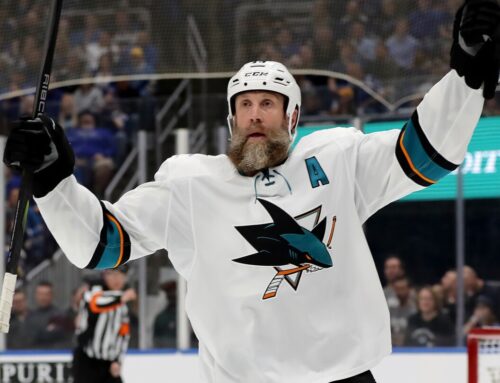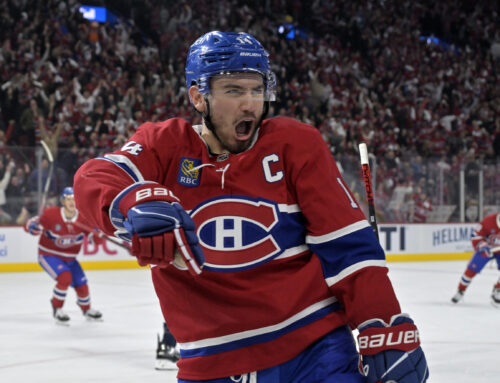
It’s ironic (in other words, great timing) that one of the most popular bubble keepers this week was in the news on Friday. Pavel Buchnevich has signed a two-year, $6.5 million contract with the Rangers, avoiding arbitration. The Rangers now sit about $4 million over the cap, which has a lot to do with the major signings of Artemi Panarin ($11.6 million cap hit) and Jacob Trouba ($8 million cap hit), so they will need to make a move or two before the start of the season in order to be cap-compliant. A Kevin Shattenkirk buyout is one possibility.
In his third NHL season, Buchnevich scored a career-high 21 goals in just 64 games while maintaining a near-50 point pace (had a played a full season). One key reason that he’s a great potential bubble keeper: He is a possibility for the Rangers’ top line with Panarin and Mika Zibanejad, as mentioned by Flip in the summer return of Lining Up. Also in the Wednesday Ramblings, Cam also mentions that Kaapo Kakko might not be ready for the top line and the first power-play unit yet, which opens up an opportunity for Buchnevich.
*
It’s never too early to get a leg up on the competition in your fantasy hockey league. Be sure to preorder your copy of the Dobber Fantasy Guide, which will be ready for download on August 1!
Today I’ll use the opportunity to start on two of my own bubble keepers in my deepest league. Full disclosure: These players are owned in an auction league in which multiyear contracts are permitted within certain limitations. If the player’s contract is expiring and he did not reach a certain points threshold, I have the opportunity of keeping the player for a 10% raise (at minimum, although some players have to be priced higher based on the previous season’s totals). These are also players that are ranked outside of the top 150 of Dobber’s Top 300 Keeper League Skaters.
*
Justin Schultz (age 29)
Ever since I started playing fantasy sports, I’ve tried living by the old investing rule of buying low and selling high. I didn’t follow that rule with Schultz, who I bought on a two-year contract after his career year of 51 points (12g-39a), a season in which he also scored 13 points (4g-9a) in 21 playoff games en route to the Penguins’ second consecutive Stanley Cup. Needless to say, buying high didn’t pay off for me.
Aside from that 51-point season, Schultz has never reached 40 points in his career. Granted, he was on a 42-point pace last season, but he played in only 29 games because of a fractured leg. Having averaged only 46 games played over the past two seasons, Schultz’s main problem has been staying healthy. If he can stay in the lineup for a full season, then there’s some potential for something.
Over each of the past three seasons, Schultz has finished with the sixth-highest average power-play time on the Penguins (between 2:17 and 2:46). That should place him at the top of the second power-play unit, although he fills in on the first-unit power play whenever Kris Letang has to assume his duties as Band-Aid Boy president.
Phil Kessel’s departure should mean that the four sure things on the Penguins’ first-unit power play are Sidney Crosby, Evgeni Malkin, Jake Guentzel, and Letang. However, it’s very possible that one or more of these players will be injured at any given time. That could result in Schultz being moved onto the first-unit power play for at least a time (particularly if Letang is injured), although Patric Hornqvist and Alex Galchenyuk should still be considered possibilities. (For some great information/discussion on the Penguins’ power play, see the Pittsburgh Lowdown voting thread in the Forum.)
Without regular first-unit power-play time, however, Schultz doesn’t reach 51 points again. It’s important to note that Letang played only 41 games that season, which resulted in Schultz receiving first-unit power-play minutes on a dilapidated defense. Schultz has demonstrated very recently that he can score at a 40-point pace, but that’s only if he can stay healthy for most of the season. He might be worth retaining on a roster with plenty of keepers, although it’s probably not worth it in my situation.
Joonas Donskoi (age 27)
I added Donskoi to my team as a rental after David Pastrnak went down with a thumb injury. Obviously I didn’t have any illusions that Donskoi would be able to produce at a Pastrnak-like level, but I simply needed a warm body to fill in at the right wing position, and he happened to be better than anyone else on my waiver wire. Donskoi was on his way to a career-high 37 points, which he reached in spite of declining production, icetime, and power-play time (which was nonexistent after the first quarter) during the season. Granted, I made the trade just nine days before the Sharks acquired Gustav Nyquist, another forward to grab potential icetime from Donskoi.
Let’s focus on what is to come, which for Donskoi is with the Colorado Avalanche. Donskoi received a four-year contract with an AAV of $3.9 million to likely play in the Avalanche’s middle six and second-unit power play. The Avs simply don’t have the depth that the Sharks did last season, which should result in more icetime for Donskoi than the 13 minutes and change he averaged in 2018-19 (9th among Sharks’ forwards).
A potential new-and-improved Avalanche second line includes Nazem Kadri centering Andre Burakovsky and Donskoi. With the Avs’ top line carrying the team in 2018-19, all three should receive a boost in value from a move from their old teams’ third lines. With that arrangement, Donskoi could very well crack the 40-point mark for the first time in his career, since it seems like he will receive more opportunity with his new team. At least we will find out what kind of player he is when he is not pushed down the lineup.
Fantasy Take: Colorado Lands Donskoi
*
Here’s a question I just received about goalie keepers.
“I can keep only one goalie between David Rittich, Thatcher Demko, or Ilya Sorokin with my 10th pick. Who should I keep?”
I’ll use this opportunity to go through each goalie, starting with the Russian phenom.
Ilya Sorokin (age 24 on August 4)
Of the three, Sorokin probably has the highest upside. The 23-year-old has dominated the KHL the past four seasons, posting a sub-2.00 GAA and minimum .929 SV% in each of those four seasons for powerhouse CSKA Moscow. Now imagine him in a Barry Trotz/Mitch Korn system. The results could be magical.
However, this is where I’m going to tell you not to keep Sorokin in this spot. He’s still under contract for one more season in the KHL. Even with that contract expiring, there’s no guarantee that he’ll sign an NHL contract, nor is there a guarantee that he’ll succeed in the NHL or even wrestle the starting job away from Semyon Varlamov (if you don’t believe me, look at the contract Varly signed). Sorokin’s a great keeper stash, but not that early – especially if he can’t help you this coming season.
Thatcher Demko (age 23)
Now that Demko has finally cracked the Canucks’ roster, he’s probably not getting as much attention in keeper leagues as he did when he was a recently drafted goaltending prospect. Believe it or not, Demko was drafted five years ago. That’s how long it can take to harvest a goalie, which is why they don’t always make the best keeper investments.
Demko won’t be the Canucks’ starter this season, as Jacob Markstrom’s game has improved under the tutelage of goaltending guru Ian Clark to the point where he can justify playing 60 games for the third consecutive season and it’s not because the Canucks have no one else to throw out there. After all, Markstrom was fourth in the NHL with 38 quality starts in 2018-19. If you don’t watch the Canucks on a regular basis, you might not have realized he was that good.
This is a situation worth watching, though, as Markstrom is in a contract year. There’s always the chance that the Canucks phase out Markstrom if he struggles and turn to Demko as the starter. If Markstrom is resigned by the Canucks, then that’s going to push Demko’s arrival time as a starter even further back.
David Rittich (age 26)
As of this writing, Rittich is not signed yet. If you believe the “follow the money” theory, the cap hit of this contract may determine how many starts he receives relative to newly acquired Cam Talbot. For what it’s worth, Rittich played more games (45) than Mike Smith (42) in 2018-19, even though Smith was the starter by the time the playoffs rolled around.
Even with this uncertainty about the contract, Rittich should be projected to start more games and earn more wins than Demko in the coming season. Fantasy owners need to think about both the short term and the long term when making keeper decisions. I realize Rittich doesn’t possess the pedigree of Sorokin or Demko, yet goalies can be extremely difficult to forecast and take much more time to develop. I might be bucking conventional keeper wisdom here, but I’d rather take the goalie that can help you right now in this spot. Especially if you’re in a position to compete for your league title this season.
To give you an idea as to where you might pick a prospect goalie, see Frozen Tools Forensics regarding Grant’s decision on Craig Anderson (hint: wait until later). Also, Dobber’s Top 100 Keeper Goalies in the Hockey Rankings may help you with your keeper decisions as well as for single-season drafts.
*
For more fantasy hockey information, or to reach out to me directly, you can follow me on Twitter @Ian_Gooding.





 VAN
VAN UTA
UTA BUF
BUF NYI
NYI WSH
WSH MIN
MIN ANA
ANA ARI
ARI
